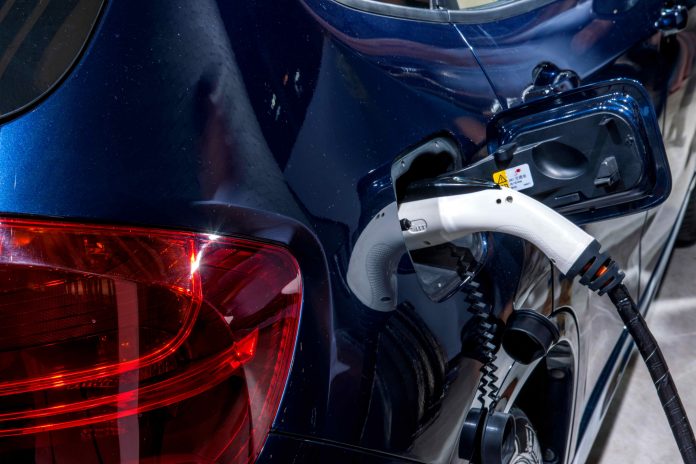Can infrastructure alone accelerate rapid growth to zero-emission vehicle adoption? Mark Richards of international law firm Bryan Cave Leighton Paisner examines the riddle of supporting the massive shift to electric vehicles and the opportunities for the construction industry to take a leading role
The Covid-19 pandemic has sent shockwaves through almost all sectors of the UK and global economy. The pandemic is likely to have lasting effects on traditional business models as we adapt to homeworking, social distancing and see aspects of public policy shift away from globalisation.
The transport sector has certainly not been immune to this, as airline operators wrestle with record slumps in demand, airports underutilised and traditional mass transit systems operators deal with a fraction of usual daily commuter passengers.
The need to socially distance has led to an increase in commuters utilising their cars to get to and from their workplaces, especially those key workers who are unable to undertake their jobs remotely. But these key workers are only a fraction of the typical commuters heading into our big cities, most are currently homeworking.
The combination of the lockdown imposed by the government and continued homeworking has significantly reduced traffic volumes in our cities, which in turn has led to significant improvements in air quality and noise reduction. Many commentators have remarked on how these benefits should be maintained through the adoption of zero-emission vehicles.
There is certainly a powerful set of voices, including the influential We Mean Business Coalition, and some major corporations, calling for a Covid-19 policy response that embeds longer-term stimulus based on considering the health and wellbeing of citizens and managing environment and social impact through investments to support, amongst other things, a transition to net-zero and clean mobility.
So, is this the moment in time for zero-emission vehicles?
Possibly, but as with many discussions on the transition to electro-mobility we have to face-off the perennial riddle, which comes first the chicken or the egg? Is the delay in the mass adoption of zero-emission vehicles due to a lack of charging infrastructure? In order to get the infrastructure built out, you need customers (ie EV drivers) willing to pay for charging – but you don’t have customers without the infrastructure…so, how do we solve this riddle?
The conditions have to be right, including most crucially a business model to fund (which will allow the finance) of rapid open-source electric vehicle charging points. If we can create this business model then is it simply a question of “build, build, build” out this charging network?
I am convinced that is a large part of solving the issue of mass adoption of electric vehicles, but before I consider the conditions for a successful business model itself there are other factors influencing the success of the widespread adoption of electric vehicles.
In no particular order, as well as rolling out an open-access rapid charging network on the UK’s motorways, A Roads, along with more on-street parking chargers (whether kerb side or lamp post) and a network of less rapid chargers (where dwell times can be longer), we will also need to wrestle with the following:
- a) Consumer education on electric vehicles and consumer behaviour generally.
- b) Establishing a greater choice of electric vehicles for consumers.
- c) Reducing interoperability and technology risks.
- d) Initial acquisition cost of electric vehicles in comparison to internal combustion vehicles.
So, what can be done about our chicken and egg riddle?
The UK government has announced a number of measures to tackle the Covid-19 pandemic. At the time of writing, we are expecting a mini-budget on 8 July where it is expected the Chancellor of the Exchequer, Rishi Sunak, will announce significant investment in “shovel-ready” infrastructure projects.
It is likely the government will place a significantly important role in the delivery and commissioning of infrastructure for some years to come, so the government will act as commissioner, guarantor, funder and market-maker.
The government can already be commended for the recent tax incentives put in place to attract company car drivers to switch to electric vehicles, this comes after a commitment to the sector through its Road to Zero strategy announced in July 2018, providing ambitious targets for new car and van sales. When coupled with the government’s commitment to reduction in CO2 emissions, the introduction at regional, city and local levels of ultra-low emission zones and clean air zones across the UK – arguably a lot of the policy framework exists to “nudge” and, in some instances push consumers to electric vehicle adoption.
Incentivise charging infrastructure
 So, against all this, it does feel like a once in a lifetime opportunity to incentivise the large-scale build-out of additional charge points across the UK, as a means to deliver “shovel-ready” infrastructure.
So, against all this, it does feel like a once in a lifetime opportunity to incentivise the large-scale build-out of additional charge points across the UK, as a means to deliver “shovel-ready” infrastructure.
The majority of charging infrastructure installations and projects will not require lengthy planning processes and consultation, there is an opportunity for the government to invest in the e-mobility sector through incentives and capital projects delivered locally through local authorities and devolved administrations. While short-term it is likely to have a stimulus effect of increasing jobs/retaining jobs in the construction sector, there are also arguably long-term amenity benefits through cleaner air and reduced noise pollution, as well as tangible economic benefits from the reduction total cost of ownership and gains in productivity.
The government continues to promote electric vehicle adoption and has enacted various pieces of legislation to promote the e-mobility transition including:
Autonomous & Electric Vehicles Act 2018 (AEV Act)
The AEV Act makes provision for introduction of regulations covering:
- Requiring large service stations and fuel retailers to install EVCPs.
- Interoperability provisions: Regulations may require operators of public charging or refuelling points to make available prescribed information relating to such points use of smart charge points.
The AEV Act provides a framework for introduction of regulations, we await sight of regulations covering the use of smart charge points and would anticipate regulations in the future to amend the Building Regulations 2010 to mandate the installation of charge points for new residential and non-residential premises.
Alternative Fuels Directive/The Alternative Fuels Infrastructure Regulations 2017
- This regulation specifies minimum standards of connector for EV charging infrastructure.
- Ad hoc access obligatory for new and existing EVCPs since 18 November 2018.
- From 17 November 2017, charging infrastructure operators must make data about the location of the chargers available on an open and non-discriminatory basis.
So, arguably, the framework exists to accelerate the roll-out of electric vehicle charge points, but this “field of dreams” investment thesis is unlikely to find endorsement across infrastructure and real estate investors seeking more certain returns from their capital deployed. It is not unreasonable for investment committees to scrutinise, “where are the customers?” to underpin and seek returns for these capital investments.
Technological changes
The massive technological changes such as the shift to e-mobility will inevitably take some time; the recent Bloomberg NEF’s Electric Vehicle Outlook 2020 highlighted that EVs will hit 10% of global passenger vehicle sales by 2025, rising to 28% in 2030 and 58% by 2040. This is driven by predictions of price parity between EVs and fossil fuel vehicles by the mid-2020s.
But if you can combine this shift with enhanced consumer education and perhaps incentives through a vehicle scrappage scheme, demand in electric vehicles will increase as we head towards 2035 when the government ends the sale of new petrol and diesel vans. The most recent SMMT figures in June 2020 show the car industry has been hit massively by Covid-19; however, battery electric vehicles grew over 20% (against overall sales across all technologies of a drop of 89%).
So once again, the size and enormity of the transformation is such that assistance from the government is really needed to help underpin these nascent investment models, whether through initial capital grants, local authority-based concessions or creating further investor capacity through its co-investment vehicle (Charging Infrastructure Investment Fund (CIIF)) to de-risk this initial period as the transition ramps up.
There are inevitably challenges with any technological transition of this scale, especially when the transition involves vast sums for consumers and capital infrastructure in new technologies, but the potential opportunities for the construction industry and wider car and component manufacturing sector are enormous, especially where the UK can take a European lead in battery manufacturing and software.
The government policy is nudging consumers and businesses towards electric vehicles, but we need more than a nudge; we can supercharge this transition through greater support on vehicle charging infrastructure deployment to create substantial post-Covid recovery sustainable growth opportunities.
There has never been a better time for the construction industry to plug-in to the e-mobility sector.
BCLP are proud to be Founding Partners of the inaugural World EV Day 2020 – Wednesday 9 September, a day of global e-mobility appreciation.

Mark Richards
Partner and co-leader – Energy, Environmental & Infrastructure














